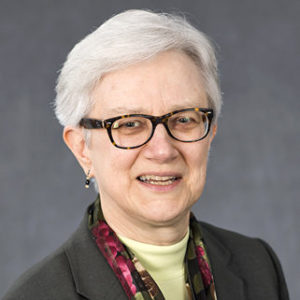Fourth Sunday of Easter
May 12, 2019

Readings:
Reading 1: Acts 13:14, 43-52
Psalm 100: 1-2, 3, 5
Reading 2: Revelation 7:9, 14B-17
Gospel: John 10:27-30
Who are the sheep; and who is the Shepherd?
The readings for “Good Shepherd Sunday” (the Fourth Sunday of Easter) are full of pastoral imagery of sheep and shepherd. Traditionally this Sunday is devoted to prayers and promotion of vocations, especially to the calling of ordained “shepherds of the Church.” In light of all of this rhetoric, any ordinary person off the street might be excused if they come away from today’s readings being a bit confused by it all — just who are the sheep, and who is the shepherd? This might especially be the case when one realizes that in the Second Reading (Rev. 7:9, 14b-17) “the Lamb” is clearly a figure with majesty, power, holiness, providence, and consolation. Yet, in the Gospel reading (John 10: 27-30, we hear the words of a Shepherd making similar and related claims.
I suggest that any confusion in this hearing may well result from a long tradition of associating “shepherding” in the religious sense with a far too narrow understanding of a “religious vocation.” Many think only of a calling to Ministerial Priesthood (Holy Orders) and /or membership in a Religious Institute (women and men who have professed religious vows of poverty, chastity, and obedience and belong to the Franciscans, Benedictines, Dominicans, etc.).
But to the contrary, official teaching of the Catholic Church provides a much wider and deeper notion of “vocation.” The Priesthood of the laity is very clear in the Catechism of the Church which teaches that the “Priesthood of Christ is composed of Baptism, Confirmation and Holy Orders. Baptism and Confirmation are the Common Priesthood. Holy Orders is the Ministerial Priesthood. “The ministerial or hierarchical priesthood of bishops and priests, and the common priesthood of all the faithful participate each in its own proper way, in the one priesthood of Christ” (Catechism 1546, 1547). Further, The Decree on the Apostolate of Lay People of the Second Vatican Council reminds us of “the laity’s special and indispensable role in the mission of the Church. Indeed, the Church can never be without the lay apostolate; it is something that derives from the layperson’s very vocation as a Christian. Scripture clearly shows how spontaneous and fruitful was this activity in the Church’s early days” (Acts 11:19-21; 18:26; Rom.16:1-16; Phil. 4:3).
The profound reality that links these readings is that Jesus is both the Good Shepherd and the Lamb of God. As followers of Jesus, Christians are called through Baptism and given a similar dual vocation. Especially in this Easter Season, each Christian is challenged to closely heed Christ’s voice and make a renewed commitment to living out their particular vocation, while also supporting everyone else in their individual calling. Such a vocation might be to be a fantastic mom, a helpful child, a wise elder, a generous teenager — or any variety of God’s beloved family.
In today’s challenging times, we anticipate the full promulgation of Pope Francis’ new apostolic constitution for the Roman Curia “Praedicate Evangelium” (“Preach the Gospel”) on June 29, the Feast of St. Peter and St. Paul. The whole thrust of the constitution will take the bold step of placing evangelization at the heart of the Roman Curia’s mission; every aspect of Catholicism’s civil service must flow from this. This is also aimed at sending a signal to dioceses around the world to follow suit. Other changes set out by the constitution include the establishment of the Pontifical Council for the Protection of Minors as part of the Curia, which would give the child-protection body greater authority and make it more effective.
According to Cardinal Oscar Rodriguez Maradiaga, the coordinator of the council of cardinals, the new constitution also envisages putting more laity into positions of leadership. The main objective is to underline the importance of laypeople in the Church and for the Church. In an important and paradoxical way, this development in Church governance brings additional meaning to Jesus the Good Shepherd carrying us on his shoulders as symbolized in a beautiful way by the Pallium.
The Pallium is a liturgical vestment made from lamb’s wool worn over the chasuble by the pope, archbishops’ shoulders while celebrating Mass. The lamb’s wool is meant to represent the lost, sick or weak sheep which the shepherd places on his shoulders and carries to the waters of life. The human race — every one of us — is the sheep lost in the desert which no longer knows the way. The Son of God will not let this happen; he cannot abandon humanity in so wretched a condition. He leaps to his feet and abandons the glory of heaven, in order to go in search of the sheep and pursue it, all the way to the Cross. He takes it upon his shoulders and carries our humanity; he carries us all — he is the good shepherd who lays down his life for the sheep. What the Pallium indicates first and foremost is that we are all carried by Christ. But at the same time, it invites us to carry one another. Hence the Pallium becomes a symbol of the shepherd’s mission. As Pope Benedict said, the Pallium is an invitation to carry one another; we are all to be shepherds to each other, to carry each other on our shoulders. Thus — we are both shepherd and sheep with and for each other as hear the voice of Jesus, The Good Shepherd, come to know him, and follow him.
Sr. Dawn M. Nothwehr, OSF, PhD
Professor of Catholic Theological Ethics